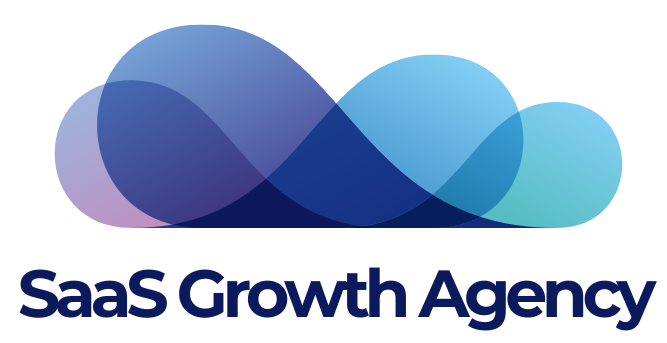Navigating the dynamic landscape of SaaS marketing requires a keen understanding of key metrics to drive growth and ensure success. In this article, we’ll explore essential marketing metrics for SaaS products, their significance, and how to effectively measure them. By mastering these metrics, businesses can make informed decisions to optimize their marketing strategies and propel their SaaS ventures to new heights.
Let’s delve into the key marketing metrics for your SaaS product and learn how to measure them like a pro.
1. Customer Acquisition Cost (CAC):
CAC represents the average cost incurred to acquire a new customer, encompassing expenses related to marketing, sales, and onboarding.
- Importance: Understanding CAC helps businesses evaluate the efficiency and scalability of their customer acquisition strategies. It ensures that acquisition costs align with revenue generated from new customers.
- Measurement: Calculate CAC by dividing total acquisition costs (marketing and sales expenses) by the number of new customers acquired within a specific period.
2. Customer Lifetime Value (CLTV):
CLTV quantifies the total revenue expected from a customer over the entire duration of their relationship with the company.
- Importance: CLTV provides insights into the long-term profitability of acquiring and retaining customers. It helps in determining the appropriate investment in acquiring and serving customers based on their potential value.
- Measurement: Calculate CLTV by multiplying the average revenue per customer by the average customer lifespan. This gives an estimate of the total value a customer brings to the business.
3. Churn Rate:
Churn rate measures the percentage of customers who cancel their subscriptions or stop using the service within a specific period.
- Importance: High churn rates can indicate dissatisfaction with the product or service, leading to revenue loss and hindering growth. Monitoring churn helps identify areas for improvement and aids in implementing strategies to enhance customer retention.
- Measurement: Calculate churn rate by dividing the number of customers lost during a period by the total number of customers at the beginning of that period.
4. Monthly Recurring Revenue (MRR) and Annual Recurring Revenue (ARR):
MRR and ARR quantify the predictable revenue generated from subscription-based services on a monthly and annual basis, respectively.
- Importance: MRR and ARR provide insights into revenue stability and growth potential, allowing businesses to forecast future revenue streams and assess the impact of pricing changes and customer expansions.
- Measurement: Calculate MRR by summing up the monthly subscription fees from active customers. ARR is calculated similarly but on an annual basis.
5. Conversion Rates:
Conversion rates measure the percentage of leads or prospects that take a desired action, such as signing up for a trial or purchasing a subscription.
- Importance: Conversion rates indicate the effectiveness of marketing and sales efforts in driving desired actions. By optimizing conversion rates, businesses can improve the efficiency of their funnel and increase revenue.
- Measurement: Calculate conversion rates by dividing the number of conversions by the total number of leads or visitors, then multiplying by 100 to get the percentage.
6. Customer Engagement Metrics:
Customer engagement metrics encompass various indicators of how actively customers interact with the product or service, such as usage frequency, feature adoption, and satisfaction scores.
- Importance: High levels of customer engagement correlate with increased retention, loyalty, and advocacy. Monitoring engagement metrics helps identify areas for product improvement and customer support.
- Measurement: Utilize tools such as analytics platforms and surveys to track and measure user engagement, feature usage, and customer satisfaction scores.
7. Return on Investment (ROI):
Ultimately, all marketing efforts should be evaluated based on their ROI. ROI measures the profitability of marketing campaigns and initiatives by comparing the gains (revenue generated) to the costs incurred.
- Importance: ROI helps businesses evaluate the effectiveness of their marketing investments and allocate resources to the most profitable channels and strategies.
- Measurement: Calculate ROI by subtracting the total costs of marketing efforts from the total revenue generated, then dividing by the total costs and multiplying by 100 to get the percentage.
Now that you know the key marketing metrics for your SaaS product, how do you measure them effectively?
Invest in analytics tools and platforms that provide comprehensive insights into your marketing performance. Utilize customer relationship management (CRM) systems, marketing automation software, and analytics platforms to track and analyze relevant metrics in real-time. Leverage data visualization techniques to present your findings in a clear and actionable format, enabling informed decision-making across your organization.
Regularly review and reassess your marketing metrics to adapt to changing market dynamics and customer preferences. Continuously optimize your strategies based on data-driven insights to stay ahead of the competition and drive sustainable growth for your SaaS business.
In conclusion, mastering the key marketing metrics for your SaaS product is essential for achieving sustainable growth and success in today’s competitive landscape. By understanding and measuring these metrics effectively, you can make informed decisions, optimize your marketing efforts, and propel your SaaS business to new heights. Unlock your potential and thrive in the world of SaaS with actionable insights derived from robust marketing analytics.
Ready to measure your saaS efficiency?
Get in touch with us today to discover how our agency can optimize your marketing metrics for maximum growth.
